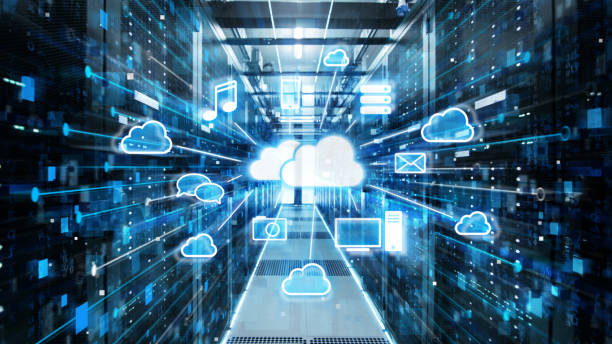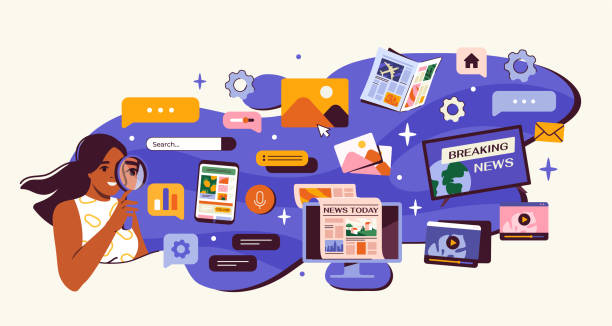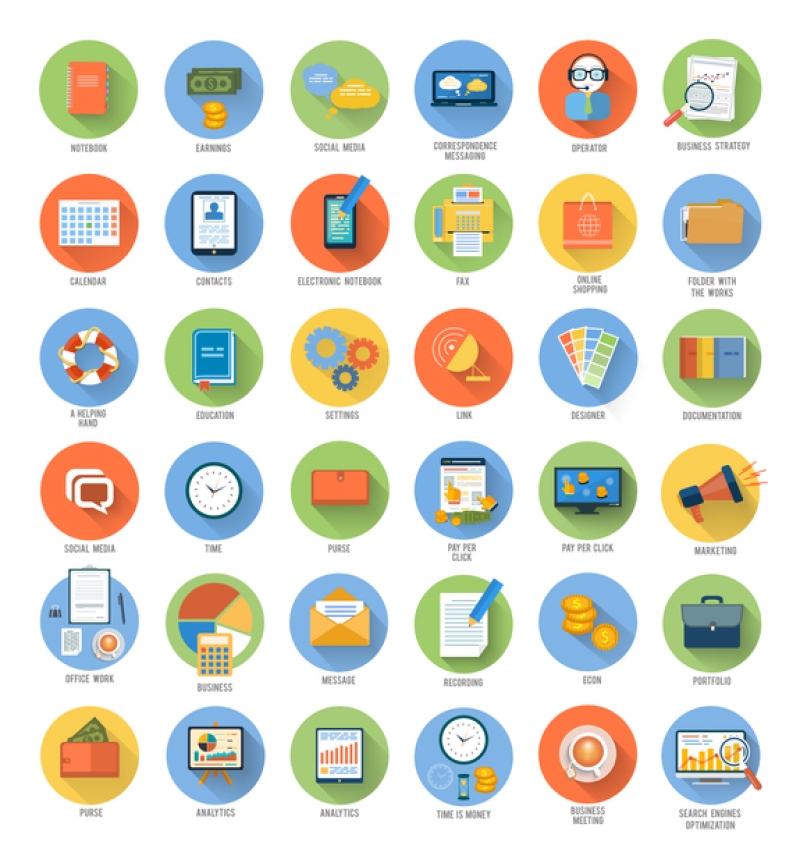Computers have become an integral part of modern life, revolutionizing every aspect of society. From communication and education to healthcare and entertainment, the influence of computers on society is profound and far-reaching. They have transformed how we live, work and interact, creating opportunities and challenges that shape the way we navigate the modern world.
This blog explores the multifaceted impact of computers on society, highlighting their influence on different sectors, the benefits they bring and the potential challenges they present.
1. The evolution of computers and their pervasiveness
Computers have evolved from massive, room-filling machines in the mid-20th century to portable devices we carry in our pockets. This evolution has made computers accessible to billions of people, enabling their integration into daily life.
a. From specialized tools to everyday necessities - Initially, computers were used exclusively in scientific research and military applications. Over time, they became mainstream tools in business, education and households. Today, personal computers, laptops and smartphones are ubiquitous, blurring the lines between work and personal life.
b. Connectivity and the Internet - The integration of computers with the internet has amplified their societal impact. The ability to access vast amounts of information, connect with people worldwide and perform a wide array of tasks online has redefined the concept of global connectivity.
2. The role of computers in communication
The advent of computers has revolutionized communication, making it faster, more efficient and more accessible.
a. Digital Communication Channel - Email, instant messaging and social media platforms have replaced traditional methods of communication like postal mail and landline telephony. These tools enable instant interaction across geographical boundaries.
Example: Social media platforms like Facebook, Twitter (X) and WhatsApp, allow people to connect, share ideas and maintain relationships regardless of physical distance.
b. Remote Work and Collaboration - Computers facilitate remote work through video conferencing, cloud storage and collaborative tools. This shift was especially evident during the COVID-19 pandemic, when businesses and institutions adopted remote operations to ensure continuity.
Example: Platforms like Zoom, Microsoft Teams and Google Workspace enable real-time collaboration among teams dispersed across different locations.

3. Computers in education
Computers have redefined education, making learning more accessible, interactive and personalized.
a. E-Learning and Online Education - Computers enable online education through platforms like Coursera, Khan Academy and Udemy, providing access to courses on virtually any subject. This democratization of education allows individuals from all walks of life to acquire knowledge and skills.
Example: Massive Open Online Courses (MOOCs) offer affordable and flexible learning options, particularly beneficial for students in remote or underserved areas.
b. Interactive Learning - Digital tools like simulations, educational games and virtual labs enhance learning experiences by making complex concepts more understandable and engaging.
Example: Science students can use virtual dissection tools or interactive software to explore anatomy without the need for physical specimens.
c. Bridging Educational Gaps - Computers help bridge the gap between privileged and underprivileged students by providing access to resources like digital libraries, open-source software and online tutoring.
4. The impact of computers on healthcare
The healthcare sector has greatly benefited from advancements in computing, leading to improved diagnosis, treatment and patient care.
a. Medical Research and Diagnostics - Computers enable the analysis of vast datasets, aiding in medical research and the discovery of new treatments. AI-powered diagnostic tools improve the accuracy and speed of detecting diseases.
Example: AI algorithms are used to analyse medical images, identifying conditions like cancer or cardiovascular diseases with high precision.
b. Telemedicine - Computers facilitate telemedicine, allowing patients to consult doctors remotely. This is especially beneficial for individuals in rural or underserved areas.
Example: Apps like Teladoc and Doctor on Demand enable video consultations, prescription management and remote monitoring of chronic conditions.
c. Health Information Systems - Electronic Health Records (EHRs) streamline patient data management, making it easier for healthcare providers to access and update medical histories.
Example: Systems like Epic and Cerner improve patient care by providing a centralized platform for managing health records.

5. Economic and industrial transformation
Computers have played a pivotal role in transforming economies and industries, driving innovation and efficiency.
a. Automation and Productivity - Computers automate repetitive tasks, allowing businesses to focus on innovation and value creation. Automation has revolutionized industries like manufacturing, logistics and finance.
Example: Robotics powered by computer systems optimize assembly lines, reducing production costs and improving efficiency.
b. E-Commerce - The rise of e-commerce platforms like Amazon and eBay has changed the retail landscape, making shopping convenient and accessible to consumers worldwide.
c. Financial Systems - Computers power global financial systems, enabling online banking, digital payments and algorithmic trading. This has made financial services more accessible while increasing the speed of transactions.
Example: Digital wallets like PayPal and Google Pay facilitate seamless online transactions.
6. Cultural and social influence
The cultural and social fabric of society has been significantly influenced by computers, altering how people interact, consume media and express themselves.
a. Digital Media and Entertainment - Streaming services like Netflix and Spotify have transformed how people consume music, movies and television. Computers enable on-demand access to vast libraries of content, providing personalized recommendations based on user preferences. b. Social Media and Virtual Communities - Social media platforms create virtual communities where people share experiences, collaborate and advocate for causes. While these platforms foster connectivity, they also raise concerns about misinformation and online harassment.
c. Gaming and Virtual Worlds - Computers have given rise to the gaming industry, offering immersive experiences through virtual and augmented reality. Online multiplayer games connect players globally, fostering social interaction and competition.

7. Environmental Impact
While computers contribute to economic growth and efficiency, their widespread use raises concerns about environmental sustainability.
a. E-Waste - The rapid pace of technological advancements leads to frequent hardware upgrades, generating significant amounts of electronic waste. Improper disposal of computers and related components poses environmental hazards.
b. Energy Consumption - Data centres that power cloud computing and internet services consume vast amounts of electricity, contributing to carbon emissions. Efforts are underway to develop energy-efficient computing solutions.
Example: Companies like Google and Microsoft are investing in renewable energy to power their data centres.
8. Ethical and Privacy Concerns
The proliferation of computers and digital technologies raises ethical issues related to privacy, surveillance and data security.
a. Data Privacy - With the increasing reliance on computers for communication, transactions and storage, personal data is often collected and stored by organizations. Ensuring the security of this data is a growing concern.
b. Cybersecurity Threats - The digital age has given rise to cyber threats such as hacking, phishing and ransomware attacks. Businesses and individuals must adopt robust security measures to protect their information.
c. AI and Ethical Dilemmas - The integration of AI in computers raises ethical questions about decision-making, bias and accountability. Ensuring that AI systems operate transparently and fairly is crucial for their societal acceptance.

9. Challenges and Potential Solutions
While the influence of computers on society is overwhelmingly positive, addressing challenges is essential to ensure their benefits are maximized.
a. Digital Divide - Not everyone has equal access to computers and the internet, creating a digital divide between different socioeconomic groups. Initiatives to provide affordable devices and internet connectivity can help bridge this gap.
b. Job Displacement - Automation powered by computers can lead to job displacement in certain sectors. Reskilling and upskilling initiatives are necessary to prepare the workforce for new opportunities.
c. Addiction and Overdependence - Excessive reliance on computers can lead to issues like digital addiction, reduced face-to-face interaction and mental health challenges. Encouraging digital well-being practices is essential for maintaining balance.
Conclusion
The influence of computers on society is profound and multifaceted, touching every aspect of modern life. They have transformed how we communicate, learn, work and entertain ourselves, offering opportunities for growth and innovation. However, the challenges posed by their widespread use, such as environmental impact, ethical dilemmas and the digital divide, require careful consideration and proactive solutions. As society continues to integrate computers into its fabric, the focus should be on harnessing their potential for positive change while addressing the associated challenges responsibly. By fostering inclusivity, promoting sustainability and prioritizing ethical practices, computers can continue to be a powerful force for progress in the 21st century.

